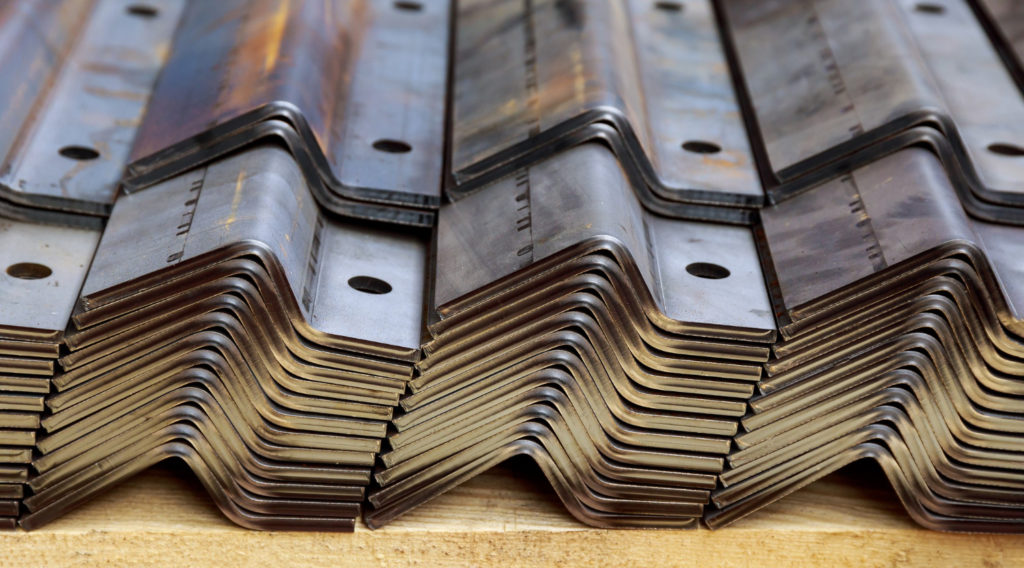Sheet piling is a crucial element in modern construction, providing a reliable and cost-effective solution for excavation support, underground structures, and shoreline protection. The demand for these structures and the need for a trustworthy and experienced sheet pile supplier have increased.
Bigfoot Pipe & Piling offers high-quality steel sheet piling solutions that you can customize to meet your specific project requirements. From technical details to construction steps, our team of experts can provide guidance and support throughout the installation process.
Discover the benefits of the sheet piling solutions that can ensure your project’s success.

Know About Technical Details
The sheet piling consists of high-strength steel, typically ASTM A572, Grade 50. The interlocking sections can be hot-rolled or cold-formed.
- Hot-rolled sheets are fabricated using a steel rolling mill and have a more comprehensive range of shapes and sizes while bending steel plates create cold-formed sheets at ambient temperature and are more suitable for simple geometries.
- It can resist high lateral forces, typically up to 200 kips per linear foot, depending on the panel’s section modulus and moment of inertia.
Understanding The Working Of Sheet Pilings
The piling works on the principle of passive earth pressure. When the sheets are driven into the ground using a vibratory or impact hammer, the soil around the panels experiences lateral compression and creates a stable equilibrium. The interlocking mechanism of the sheets ensures that the wall remains intact and water-tight.
You can use it as temporary or permanent structures depending on the design requirements and the expected life span of the project.
Check Out The Uses Of Steel Sheet Pilings
Sheet piling has various applications in civil engineering, marine construction and infrastructure development. Some of the common uses of sheet piling are:
- Excavation Support
It provides lateral support to excavation sites and prevents soil erosion or collapse. It is used in foundation excavation, retaining walls and underground structures such as basements and parking garages.
- Shoreline Protection
It protects coastlines and riverbanks from erosion, storm surges and tidal forces. You can use it in seawalls, jetties, breakwaters and flood control structures.
- Bridge Abutments & Cofferdams
Sheet piling supports bridge abutments and provides a stable foundation for the bridge deck. The sheet piling has the usage for creating cofferdams for constructing dams, bridges and water treatment plants. Cofferdams allow workers to excavate or pour concrete in dry conditions.
- Tunnels & Shafts
You can use it to support tunnels and shafts during excavation and lining. It provides temporary or permanent stability to the surrounding soil and prevents water ingress.
Learn About The Types Of Sheet Pilings
Sheet piling comes in various shapes, sizes and interlocking mechanisms. The choice of sheet piling depends on the soil type, water table, lateral loads and construction method. Some of the common types of sheet piling are:
- Larssen sheets: Larssen sheets have a symmetrical U-shape profile and interlock at the edges using a tongue and groove system. They are suitable for soft to medium soil conditions and you can install them using a vibratory hammer.
- Z-shaped sheets: Z-shaped sheets have a flange that protrudes from the web, creating a Z-shaped profile. They are suitable for hard soil and high loads and you can install them using an impact hammer.
- Straight web sheets: Straight web sheets have a flat web and interlock at the edges using a hook and grip system. They are suitable for deep excavations and hard soil, installed using a hydraulic press.
- H-shaped sheets: H-shaped sheets have a wide flange and a narrow web, creating an H-shaped profile. They are suitable for high loads and deep excavations, installed using an impact hammer.
Construction Steps
The steel sheet piling installation involves several steps, including:
- Site preparation: You must clear the site of debris, trees and other obstacles that may hinder installation. The soil undergoes testing for its bearing capacity and water table level.
- Sheet pile driving: The steel sheet piles are driven into the ground using a vibratory or impact hammer. The piles are driven to a predetermined depth and aligned using a guide wall or a template.
- Excavation: Once you install the sheet piles, the soil inside the enclosure is excavated to the desired depth. The excavation process may require dewatering to remove groundwater and maintain a dry working environment.
- Anchoring: Depending on the design requirements, the sheet pile wall may require anchoring to resist uplift forces. Anchors consist of steel cables or rods installed at the top of the wall and embedded into the ground.
- Backfilling: The soil around the sheet pile wall needs backfilling to provide additional support and prevent lateral movement. The backfill material should be compacted to achieve the required density and prevent settlement.
Bigfoot Pipe & Piling: Your Trusted Sheet Pile Partner
Are you in need of steel sheet piling,
To keep your construction project smiling?
Look no further; we’ve got you covered,
At Bigfoot Pipe & Piling, we’re your trusted sheet pile supplier.With a wide range of options to choose,
And a team of experts to guide you through,
Our sheet piling services are top-notch,
And will ensure your project doesn’t botch.So don’t hesitate to give us a call,
We’ll provide a solution that stands tall,
For all your excavation and shoreline protection needs,
Bigfoot Pipe & Piling is the way to succeed!

